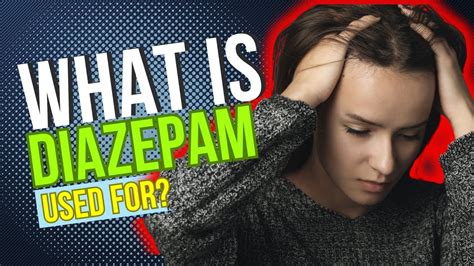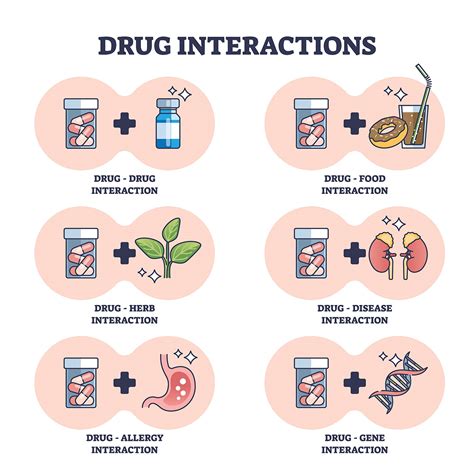Intro
Diazepam works by enhancing GABA effects, calming anxiety, and relieving insomnia, muscle spasms, and seizures, offering therapeutic benefits as a benzodiazepine medication.
The importance of understanding how certain medications work cannot be overstated, especially when it comes to drugs like diazepam that have been widely used for various medical conditions. Diazepam, known by its brand name Valium, is a benzodiazepine that has been prescribed for decades to treat anxiety disorders, alcohol withdrawal symptoms, muscle spasms, and as a sedative before surgeries or medical procedures. Its effectiveness in providing relief for these conditions has made it a staple in many healthcare settings. However, like all medications, it's crucial to grasp not just its benefits but also its potential risks and how it functions within the body.
Diazepam's mechanism of action is rooted in its ability to enhance the effects of gamma-aminobutyric acid (GABA), a neurotransmitter in the brain that inhibits nerve transmission, thereby producing a calming effect. By increasing the efficiency of GABA, diazepam helps to reduce anxiety, induce sleep, relax muscles, and prevent seizures. This complex interaction at the neurological level underscores the drug's versatility in treating a range of conditions. Understanding how diazepam works can also shed light on its potential side effects and why it's essential to use it under medical supervision.
The use of diazepam and other benzodiazepines has been a topic of discussion due to their potential for dependence and abuse. Despite these risks, when used appropriately and under the guidance of a healthcare professional, diazepam can be an effective tool in managing severe anxiety and other conditions. The key to its safe use lies in a thorough understanding of its pharmacology, including its onset of action, duration of effects, and potential interactions with other medications. As medical science continues to evolve, so does our understanding of how drugs like diazepam can be best utilized to improve patient outcomes while minimizing risks.
How Diazepam Works

Diazepam exerts its therapeutic effects by acting on the central nervous system (CNS). It belongs to the class of drugs known as benzodiazepines, which are characterized by their ability to enhance the effect of the neurotransmitter GABA. GABA is an inhibitory neurotransmitter, meaning it reduces the activity of the neurons to which it binds. By enhancing GABA's effects, diazepam increases the inhibitory effects on the nervous system, leading to a range of therapeutic benefits including anxiolysis (reduction of anxiety), sedation, muscle relaxation, and anticonvulsant activity.
Therapeutic Uses of Diazepam
The therapeutic applications of diazepam are diverse, reflecting its broad pharmacological profile. It is commonly prescribed for: - Anxiety disorders: Including generalized anxiety disorder, panic disorders, and social anxiety disorder. - Alcohol withdrawal: To manage symptoms such as anxiety, tremors, and seizures that occur during alcohol withdrawal. - Muscle spasms: Diazepam can help relieve muscle spasms and spasticity. - Seizures: It is used in the management of certain types of seizures. - Sedation: Before surgeries or medical procedures, diazepam can be used as a sedative.Benefits and Risks of Diazepam

The benefits of diazepam are well-documented and include its rapid onset of action, efficacy in a variety of conditions, and relatively low cost compared to some newer medications. However, like all medications, diazepam also carries potential risks. The most significant risks include dependence, tolerance, and a range of side effects such as drowsiness, confusion, and impaired coordination. The risk of dependence is particularly notable and has led to guidelines recommending the use of diazepam for short periods (typically no more than 4 weeks) and at the lowest effective dose.
Side Effects of Diazepam
Common side effects of diazepam include: - Drowsiness - Dizziness - Confusion - Difficulty concentrating - Memory problems - Irritability - Muscle weakness - Lack of coordination or balanceDiazepam Dosage and Administration

The dosage of diazepam varies depending on the condition being treated, the patient's age, and their response to the medication. It is available in various formulations, including tablets, oral solutions, and rectal tubes for the management of acute seizures. The typical starting dose for anxiety is 2 mg, two to four times a day, which can be adjusted as needed. For alcohol withdrawal, the initial dose is often higher, at 10 mg, three to four times a day, in the first 24 hours, reducing subsequently as the patient's condition improves.
Special Considerations
Special consideration must be given to certain patient populations, including the elderly, children, and those with liver or kidney disease. Diazepam is metabolized by the liver and excreted by the kidneys, so dose adjustments may be necessary in patients with hepatic or renal impairment. Additionally, because diazepam can cause respiratory depression, it should be used cautiously in patients with respiratory disease.Interactions with Other Medications

Diazepam can interact with a variety of medications, either by enhancing their effects or by increasing the risk of side effects. Notable interactions include:
- Other CNS depressants: Such as opioids, barbiturates, and other benzodiazepines, which can increase the risk of respiratory depression, sedation, and coma.
- Antihistamines: Which can enhance sedative effects.
- Anticonvulsants: The efficacy of diazepam as an anticonvulsant may be reduced by certain anticonvulsant medications.
Withdrawal from Diazepam
Withdrawal from diazepam can occur after prolonged use and is characterized by symptoms such as anxiety, insomnia, tremors, sweating, and in severe cases, seizures. The risk of withdrawal underscores the importance of gradual dose reduction when discontinuing diazepam, under the supervision of a healthcare provider.Alternatives to Diazepam

For patients who cannot tolerate diazepam or for whom it is contraindicated, several alternatives exist. These include other benzodiazepines with different pharmacokinetic profiles, non-benzodiazepine anxiolytics, and non-pharmacological interventions such as cognitive-behavioral therapy (CBT) for anxiety disorders. The choice of alternative depends on the specific condition being treated and the patient's medical history.
Future Directions
Research into the treatment of anxiety and other conditions for which diazepam is prescribed continues to evolve. Newer medications and therapies aim to provide effective treatment with fewer side effects and less risk of dependence. Additionally, there is a growing interest in personalized medicine, where treatment is tailored to the individual's genetic, environmental, and psychological factors.Conclusion and Final Thoughts

In conclusion, diazepam is a versatile medication that has been used for decades to treat a variety of conditions. Its effectiveness, combined with its relatively rapid onset of action, makes it a valuable tool in clinical practice. However, its potential for dependence and side effects necessitates careful use and monitoring. As our understanding of neuroscience and pharmacology advances, so too will our approaches to treating anxiety, seizures, and other conditions, potentially leading to the development of newer, safer medications.
We invite you to share your thoughts on the use of diazepam and its alternatives. Have you or someone you know been prescribed diazepam? What were your experiences? Do you think there's a need for more education on the safe use of benzodiazepines? Please comment below and let's start a conversation about mental health, medication, and wellness.
What is diazepam used for?
+Diazepam is used to treat anxiety disorders, alcohol withdrawal symptoms, muscle spasms, and as a sedative before surgeries or medical procedures.
How does diazepam work?
+Diazepam works by enhancing the effects of the neurotransmitter GABA in the brain, leading to a calming effect on the nervous system.
What are the potential side effects of diazepam?
+Common side effects of diazepam include drowsiness, dizziness, confusion, difficulty concentrating, and muscle weakness. More severe side effects can include dependence and respiratory depression.
Can diazepam be addictive?
+Yes, diazepam can be addictive. It is a controlled substance due to its potential for dependence and abuse. Patients should use it only as directed by their healthcare provider and for the shortest duration necessary.
What are the alternatives to diazepam?
+Alternatives to diazepam include other benzodiazepines, non-benzodiazepine anxiolytics, and non-pharmacological interventions such as cognitive-behavioral therapy (CBT) for anxiety disorders.
